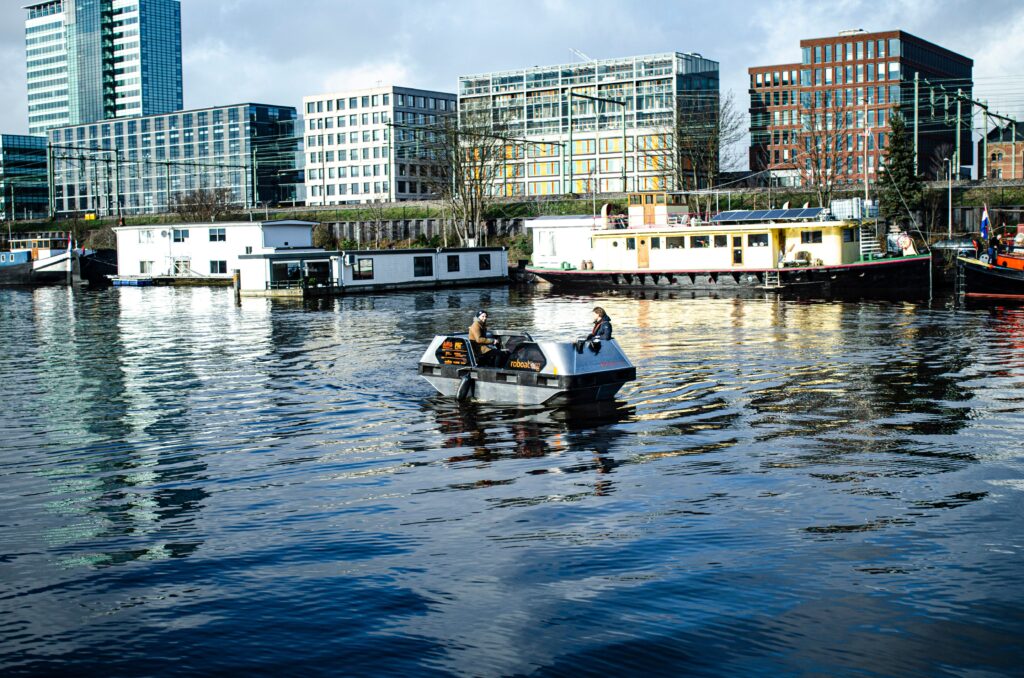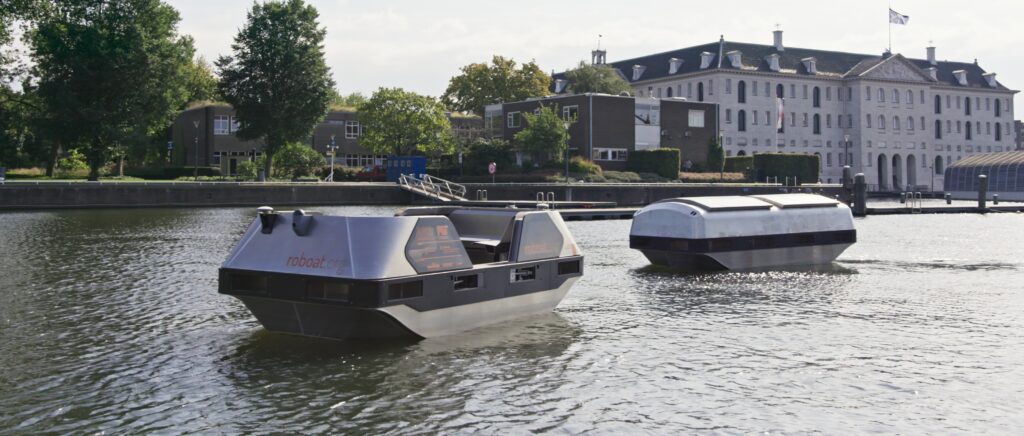MIT and CSAIL’s autonomous water taxis on Amsterdam canals. There are hardly many locations in the world where self-driving water taxis are a viable option. The first self-navigating, totally autonomous robot boats were launched this week by experts from MIT Computer Science and Artificial Intelligence Laboratory (CSAIL) and the Senseable City Laboratory. Roboat (geddit?), as they are known, took their first trips across the canals on Oct 29, 202.
If you don’t get seasick, an autonomous boat might be the right mode of transportation for you. Scientists from MIT’s Computer Science and Artificial Intelligence Laboratory (CSAIL) and the Senseable City Laboratory, in collaboration with the Amsterdam Institute for Advanced Metropolitan Solutions (AMS Institute) in the Netherlands, have completed the third and final project in their self-navigating trilogy: a full-scale, fully autonomous robotic boat that can be deployed along Amsterdam’s canals.
Buffalo Automation, a Buffalo, New York-based firm, is also looking into the possibility of launching automated water taxi — a self-driving boat — at Volunteer Landing on the Tennessee River.
Since the crew began prototyping miniature vessels in the MIT pool in late 2015, “Roboat” has gone a long way. Last year, the researchers created a 2-meter long half-scale medium model that displayed impressive navigational abilities. Two full-scale Roboats were launched this year, proving that they can carry up to five people, collect rubbish, distribute commodities, and provide on-demand infrastructure.
[email-subscribers-form id=”1″]

The boat is futuristic in appearance, with a sleek black and gray color scheme, two seats facing each other, and orange block letters on the sides illustrating the designers’ namesakes. It is a totally electric boat with a battery the size of a small chest that can run for up to 10 hours and can be charged wirelessly.
In the Amsterdam canals, autonomous Roboats set sail, carrying up to five passengers, collecting rubbish, delivering goods, and providing on-demand infrastructure.
“We now have higher precision and robustness in the perception, navigation, and control systems, including new functions, such as close-proximity approach mode for latching capabilities, and improved dynamic positioning, so the boat can navigate real-world waters,” says Daniela Rus, MIT professor of electrical engineering and computer science and director of CSAIL. “Roboat’s control system is adaptive to the number of people in the boat.”
Roboat requires a painstaking combination of proper navigation, perception, and control software to traverse the busy waters of Amsterdam quickly.

The boat chooses a safe route from point A to point B on its own, using GPS, while continuously scanning the environment to avoid collisions with objects like as bridges, pillars, and other boats. Roboat employs lidar and a multitude of cameras to enable a 360-degree view to autonomously select a clear path and avoid colliding with things. The “perception kit” is a collection of sensors that allows Roboat to perceive its environment. When the perception picks up an unseen object, such as a canoe, the algorithm marks it as “unknown,” and the object is manually identified and categorized as “canoe” when the team examines the collected data later in the day.
The control algorithms, which are comparable to those used in self-driving automobiles, work similarly to a coxswain issuing commands to rowers by converting a specified path into instructions for the propellers that enable the boat to move.
If you believe the boat seems futuristic, one of its most astounding feats is its latching mechanism: when small cameras on the boat detect appropriate QR codes, they direct it to the docking station or other boats. “The system allows Roboat to connect to other boats and the docking station to form temporary bridges to alleviate traffic, as well as floating stages and squares, which were not possible with the previous iteration,” says Carlo Ratti, professor of practice and director of the Senseable City Lab at MIT.

Roboat is designed to be adaptable. The team came up with a universal “hull” design, which is the part of the boat that rides in and on the water. Roboat features a universal hull design where the base is the same but the top decks may be swapped out depending on the use case, whereas ordinary boats have individual hulls intended for various uses.
“As Roboat can perform its tasks 24/7, and without a skipper on board, it adds great value for a city. However, for safety reasons it is questionable if reaching level A autonomy is desirable,” says Fabio Duarte, a principal research scientist in DUSP and lead scientist on the project. “Just like a bridge keeper, an onshore operator will monitor Roboat remotely from a control center. One operator can monitor over 50 Roboat units, ensuring smooth operations.”
The next step for Roboat is to pilot the technology in the public domain.
“The historic center of Amsterdam is the perfect place to start, with its capillary network of canals suffering from contemporary challenges, such as mobility and logistics,” says Stephan van Dijk, director of innovation at AMS Institute.
Roboat has been presented at the IEEE International Conference on Robotics and Automation in previous incarnations. The boats will be unveiled in Amsterdam’s waters on October 28. Ratti, Rus, Duarte, and Dijk worked on the project alongside Andrew Whittle, MIT’s Edmund K Turner Professor in civil and environmental engineering; Dennis Frenchman, professor at MIT’s Department of Urban Studies and Planning; and Ynse Deinema of AMS Institute. The full team can be found on Roboat’s website. The project is a joint collaboration with AMS Institute. The City of Amsterdam is a project partner

